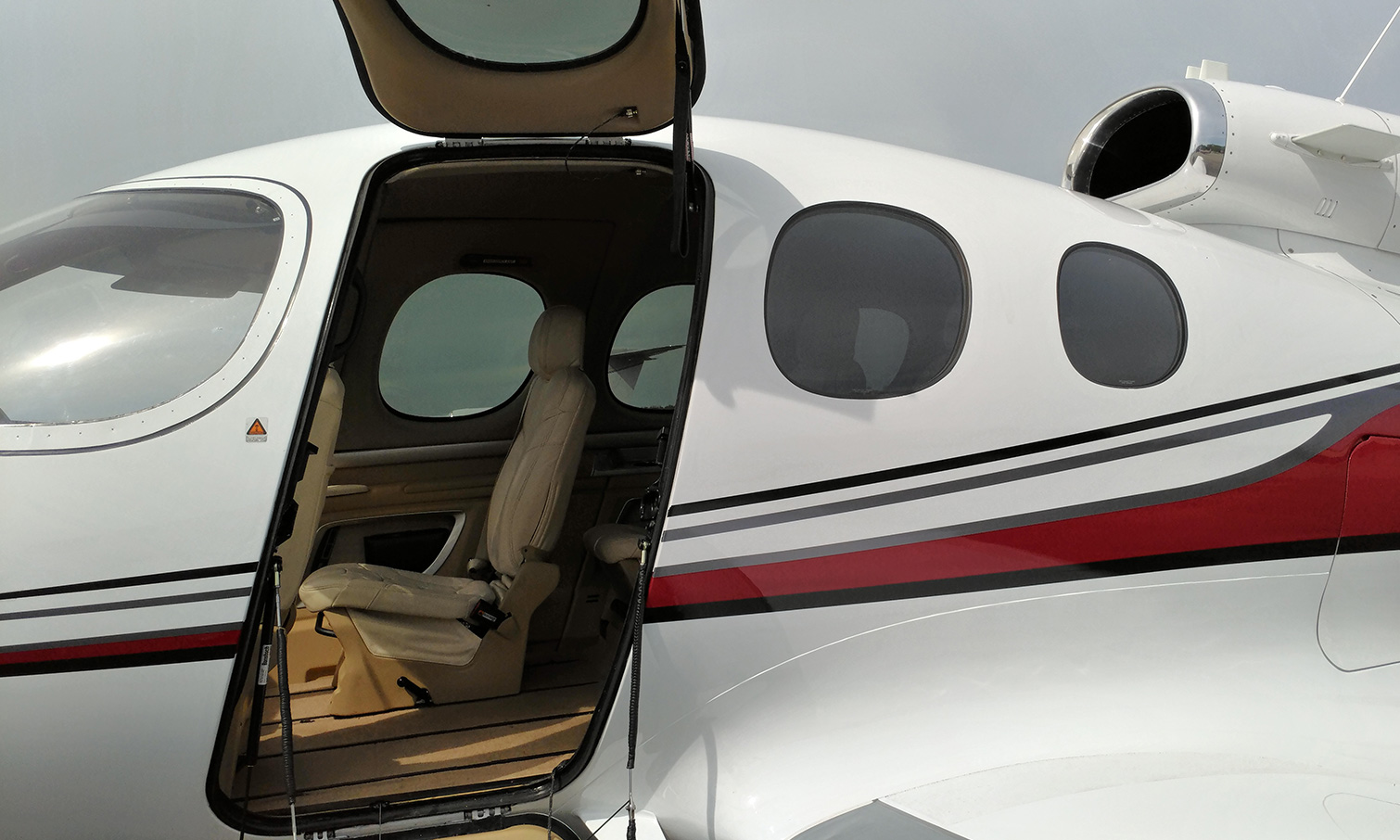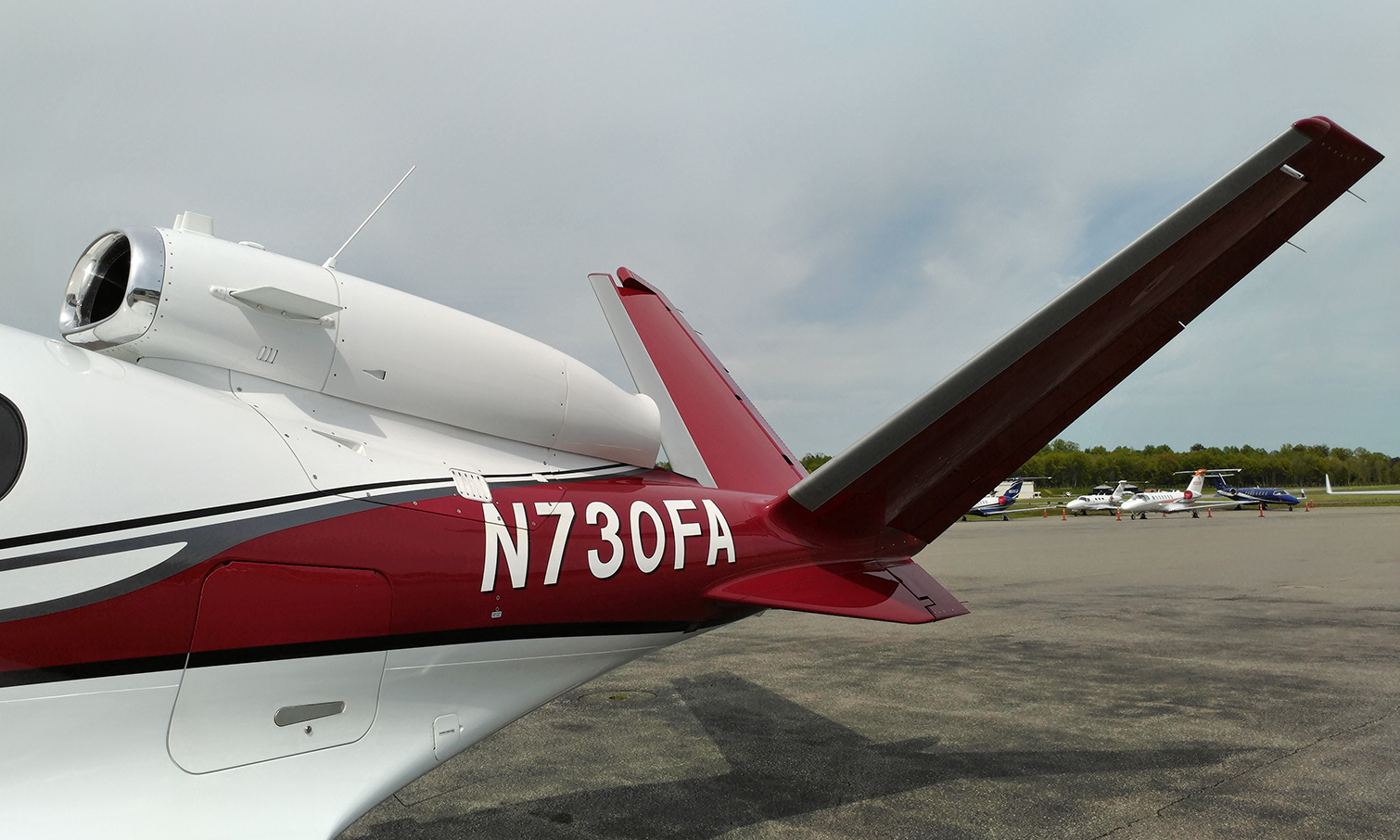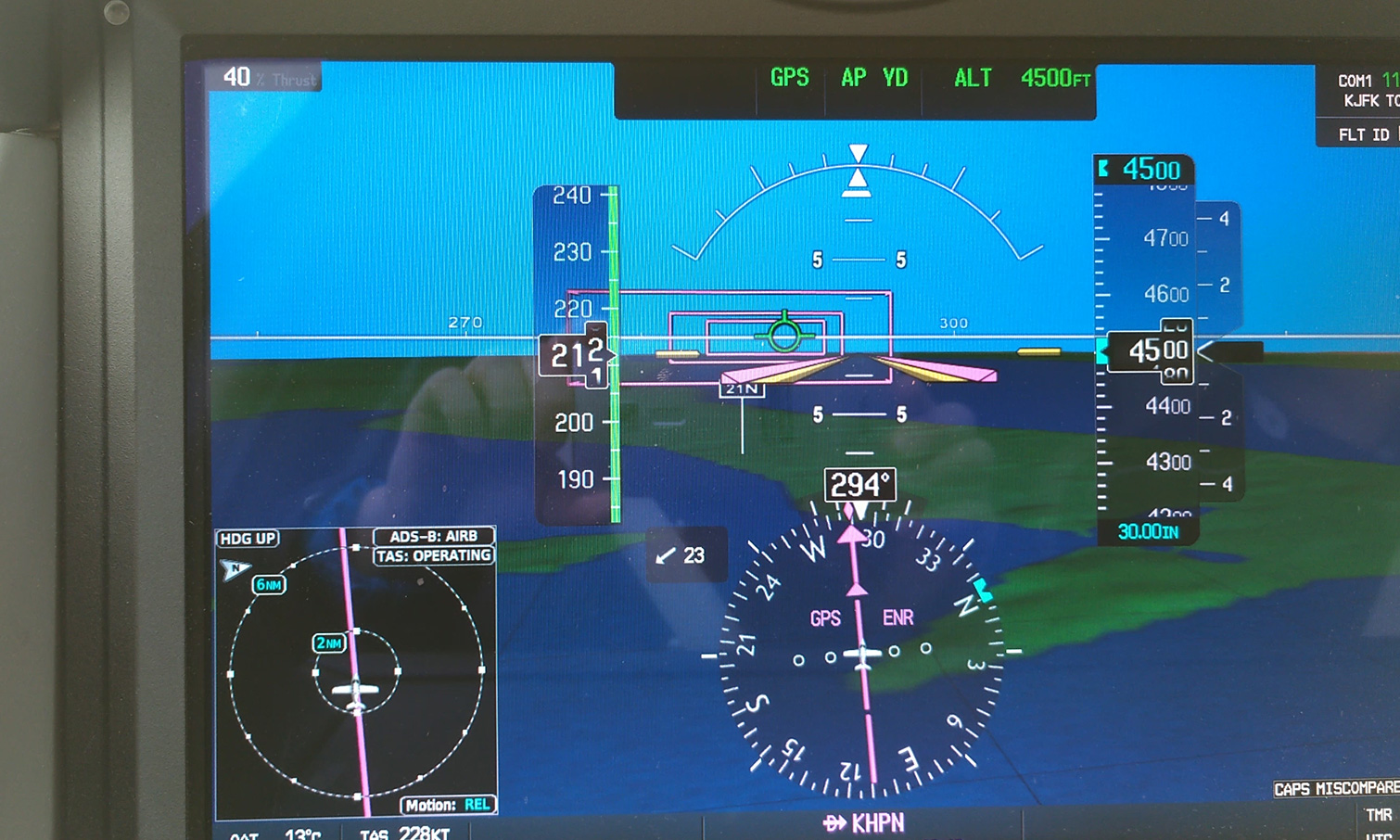Forget Flying Cars: I Just Flew a $2 Million Personal Jet
The Cirrus Vision Jet is a luxurious aircraft that’s remarkably easy to fly and stuffed with awesome tech amenities.
The flying car may never take off, but the personal jet has already landed.
While companies such as Google, Intel, Toyota and Uber are working on flying cars (actually, really big drones), Cirrus Aircraft has introduced the Vision Jet, the first single-engine private jet designed to be flown by its owner.

So while all those overhyped research projects may never become a reality, the Vision Jet has already received FAA certification and is available for about $2 million. Moreover, to prove just how easy it is to fly, Cirrus let me pilot (for a very short time) one of the first six Vision Jets off the line.
Flying your own jet is several orders of magnitude better than flying first class (never mind economy). There's no surly security personnel, no gate delays, no cranky passengers and no one to tell you what you can't bring on board.
Cirrus has been building small private planes for over 30 years in the U.S. The company is perhaps best known for its unique Airframe Parachute System. Essentially, it's a parachute for the plane — the entire plane — adding an element of safety that should be intrinsic to any mode of personal flying transportation.
Cirrus expects most Vision Jet owners will pilot the aircraft themselves -- you do need to be a licensed pilot. When you pick up the aircraft in Knoxville, Tennessee, customers also take a nine-day training course on the jet and its safety systems, including the plane's parachute.
Like a Flying BMW
With its low-wing and V-tail design, the Vision Jet is sleek but on the cute rather than sexy side. It offers excellent visibility from within the cockpit, lots of convenience (yes, there are cup holders), the latest technology and, of course, comfort.

In fact, the leather seats make you feel like you're ensconced in a BMW Series 7 sedan.
By the Numbers: Cirrus Vision Jet
| Capacity | Seats up to five adults and two children |
|---|---|
| Jet Engine | Williams International FJ33-5A |
| Top Speed | 345 mph |
| Range | 1,200 miles |
| Pilot license required? | Yes |
| Tech amenities | Cirrus Perspective Touch by Garmin Cockpit, Sirius/XM radio, satellite phone, four powered USB ports |
| Maximum Useable Fuel | 2,000 pounds |
| Wingspan | 37 feet |
| Weight | 3,572 pounds |
And flying your own jet is several orders of magnitude better than flying first class (never mind economy). There's no surly security personnel, no gate delays, no cranky fellow passengers and no one to tell you what you can or can't bring on board.
You can clip along at 4,000 feet at up to 345 mph. That's a good 75 mph quicker than even the fastest prop planes.
How Fast and How Far?
Compared with a typical prop plane (aka a piston aircraft), what the Cirrus jet offers is high-tech convenience — and speed. You can clip along at 4,000 feet at up to 345 mph. That's a good 75 mph quicker than even the fastest prop planes, like the Cessna TTx (Cirrus says it's actually 50 percent faster than the average private prop plane). So the Vision Jet can turn a typical 7-hour driving ordeal into a 1-hour hop.

The Cirrus jet seats up to five adults and two children, which is enough room for two families and their luggage. The plane has a range of around 1,200 miles before you have to land and refuel. To put that in perspective, you can't fly nonstop from New York to San Francisco but you can go directly from Los Angeles to Kansas City. (There's no room for a lavatory on board, so you'd probably want to make a pit stop, anyway.)
MORE: The Best Drones and Quadcopters on Any Budget
Enhanced Vision
Inside, the Vision Jet's cockpit is comprised of a suite of LCD displays called Garmin's Perspective Touch system, which includes what is known in aviation argot as a “synthetic-vision” system.

Not only does it provide an animated artificial horizon to follow — which made it relatively easy for me to see whether I was keeping the jet level or not — but it also reveals major landmarks, moving icons that represent other planes and critical topographical features, like mountains. Better still, the synthetic vision means you can see these objects on the screen should you become disoriented on a cloudy, moonless night.

The system also includes advanced navigation that will plot a flight path and return you to the original route and altitude should you stray for a little sightseeing. The autopilot proved smooth (constantly adjusting the trim) yet responsive (such as rapidly returning the plane to the pre-set altitude).
Cirrus is proudest of the plane's large windows, which give the tiny jet a more expansive, open feeling and makes much larger planes feel cramped by comparison.
In addition to these essential technologies, there are niceties such as Sirius XM radio (which plays through passengers' headphones), a satellite phone and USB-charging ports at each seat. For passengers, even though the jet engine is placed above and behind the cabin, the noise level while flying is less than what you'd experience in a helicopter but still more than what you'd hear on a large commercial flight. So headphones are required to muffle the din and allow everyone to talk to each other.

Cirrus is proudest of the plane's large windows, aided and abetted by the jet's carbon-fiber construction. The slightly bug-eyed fenestration gives the tiny jet a more expansive, open feeling, and makes much larger planes with their diminutive portals feel cramped by comparison. I particularly appreciated the wider view as we tracked along the West Side of Manhattan's concrete canyons. And the improved visibility made it easier to spot nearby air traffic, of which there was plenty on a sunny afternoon over New York City.
MORE: 10 Worst Data Breaches of All Time
A Joy(stick) to Fly
I got my chance to fly the plane for a few minutes in the much calmer skies above the beaches of Long Island. Despite my initial trepidation (I'm not a licensed pilot), I found controlling the Vision Jet was a remarkably easy task.

The side-mounted joystick provides enough resistance to let you know you've got a Williams International jet engine at your back but it's not overly sensitive, smoothly responding to any slight banking maneuvers. Garmin's synthetic-vision system can tend to make nervous neophytes like myself stare at the screens — am I still flying level?! — but experienced pilots will no doubt find it a helpful accouterment.
If you get nervous — or just lazy — and have trouble keeping the jet flying true, literally a push of a button kicks in the autopilot, which will straighten out the Vision Jet and take it to the altitude you preselected. Plot a route, and the system will follow that, too. It will do everything but land the plane, but even then, the automatic systems work overtime, tweaking the ailerons (hinged parts of the wings) to make sure your approach is smooth.
MORE: I Spent More Than $200 on Headphones: You Should Too
Whole-Plane Parachute
Anyone who feels less than confident relying on a single pilot (or single engine, for that matter), should be reassured by the Cirrus Airframe Parachute System.

The whole-plane parachute is triggered by pulling a red handle in the ceiling of the cockpit (it has a cover to prevent inadvertent deployment). It takes a good solid pull to set off a small, solid-fuel rocket that releases the parachute from its hidden compartment.
Harness straps simultaneously emerge from the fuselage, and within seconds, according to the company, the parachute fully extends to gently bring the plane back to earth. The system includes a hidden roll cage and energy-absorbing seats, but to prevent any fatalities, ideally the airframe parachute should be deployed above 400 feet (higher is better).
The parachute can save pilot and passengers should there be an event such as icing, engine failure, loss of fuel or other emergency. If you want to see the system in action, you can watch a chute deployment on a prop Cirrus aircraft in a real-life emergency over the ocean.
Bottom Line
For anyone who has endured the traveling torture that is commercial airflight today, the attraction of just hopping into your own plane is ineluctable. Furthermore, the Cirrus Vision Jet is a joy to fly and to ride in.
So while flying cars may forever be a George Jetson pipe dream, the personal jet is available today. Well, if you have $2 million --- and patience. Cirrus already has more than 600 customers lined up for the Vision Jet, so if you order it now, don’t expect delivery for over three years.
Sign up to get the BEST of Tom's Guide direct to your inbox.
Get instant access to breaking news, the hottest reviews, great deals and helpful tips.
John R. Quain has been reviewing and testing video and audio equipment for more than 20 years. For Tom's Guide, he has reviewed televisions, HDTV antennas, electric bikes, electric cars, as well as other outdoor equipment. He is currently a contributor to The New York Times and the CBS News television program.
-
Because_I_was_inverted Contrary to the article, there's actually a "speed limit" of 250 kts under 10000 ft. So while you can clip along very fast, at 4000 ft, you won't be able to go "balls to the wall" with the speed. Other than that nitpicking, it's a lovely toy to be sure.Reply -
TedPA_28 Ditto to the 250 mph below 10,000 ft. Personally I would consider a Socata TBM first.Reply

